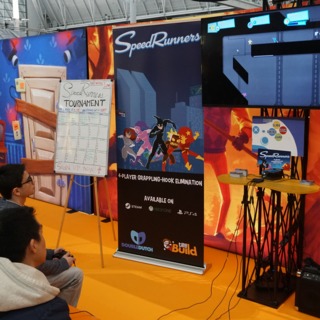

“I ended up buying the game, trying it, and not liking it at all…Streamers were giving away the new DLC, and a friend Lobsterosity won a couple of copies and gave me his extra even after I told him I never played the game. StoneAgeMarcus started because of a fellow streamer called NuRelic. Spooty’s introduction to Cadence of Hyrule came before the game was even out “The game’s predecessor, Crypt of the NecroDancer, was something I’d put thousands of hours into over the years prior.” Their story gets particularly interesting because “The game developers contacted me last February, saying they’re interested in bringing me out to their offices to do some testing for an upcoming game and getting my perspective on it as a NecroDancer speedrunner… and I knew that I’d be running Cadence of Hyrule once it fully released.” To find out I sat down with Ryan Uchima (Spooty) who speedruns Cadence of Hyrule, Marcus Driskell (StoneAgeMarcus) who speedruns The Binding of Isaac, and Iain Denison (Anti Flame) who speedruns Slay the Spire, to find out all about speedrunning this very special kind of chaos. If some kind of devil possesses those who speedrun, what exactly is it that possesses someone who speedruns a game that is designed to be random? They offer as close to infinity as our brains can handle, and yet, despite this chaos, people have chosen to speedrun them. This is all good and well for most games, but what about when games are inherently built on RNG? What if the whole point of the game is to offer an unpredictable world to master? Roguelikes and plenty of sandbox games all offer players a chance to replay the same game thousands of times without ever having the same experience.

Sure, there are breakthroughs here and there, but there is a correct way to do things if you want the best results. This is why I’ve always viewed it as more of a science than anything else. It’s a fixed affair, one that is a test of memory as much as skill, but one that aims to take the attempts at randomness that games make, and reduce them to predictable and controllable algorithms. Most games have specific patterns to learn the levels are always the same, the items can reliably be found underneath a chair, or behind some boxes. It’s incredible to watch from the outside, and it’s a daunting field to get into for many people. The aim is to learn a game so perfectly that fractions of a second are relevant to a world record, It’s not enough to simply be good at a game you want to know exactly which items to pick up and how many hits each boss needs as well. Speedrunning is a discipline that could best be described as a science, albeit a somewhat erratic one.


 0 kommentar(er)
0 kommentar(er)
